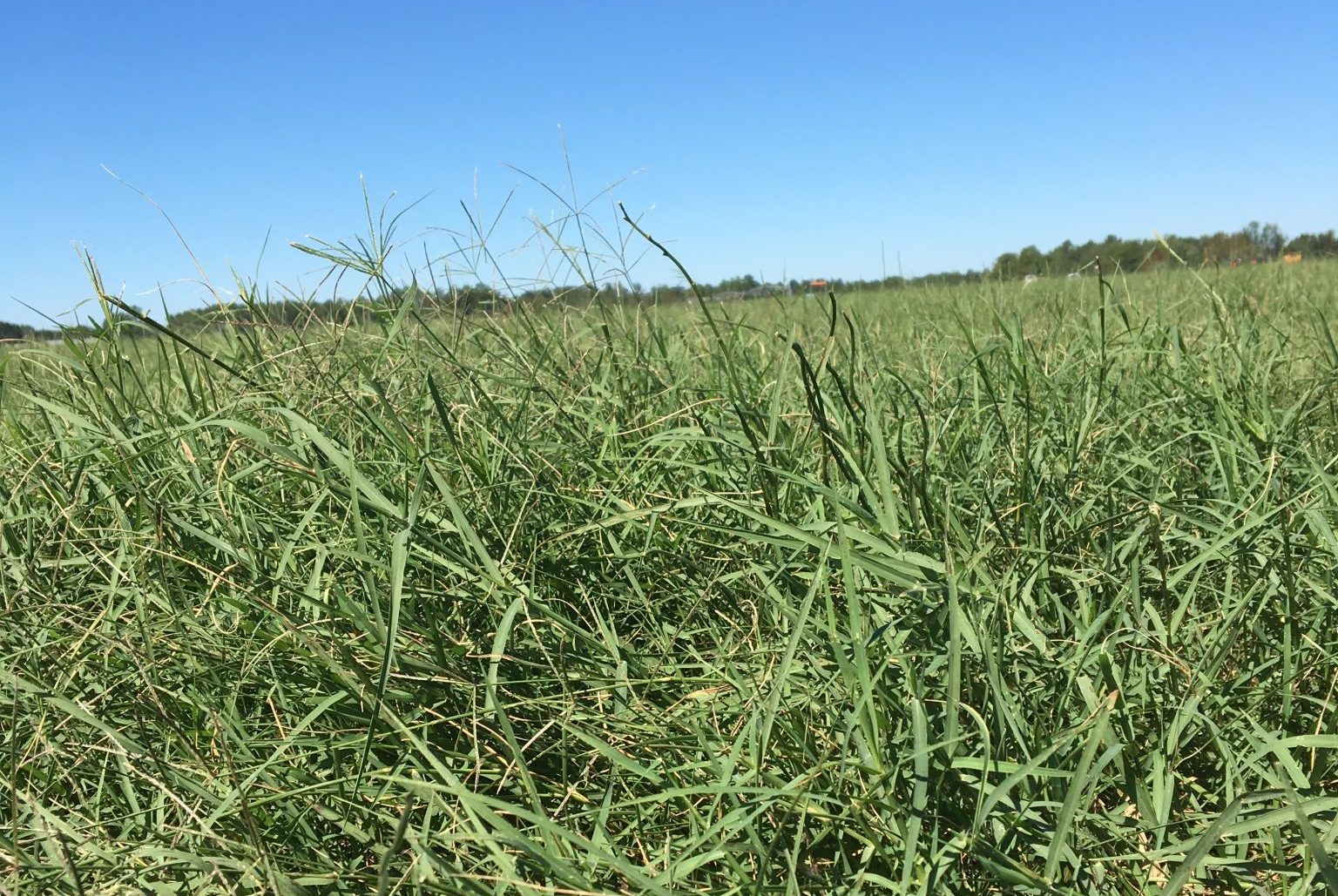Farming

Forage bermudagrasses are warm-season perennial grasses that grow throughout Alabama. They are used primarily for grazing or hay production but can also be fall stockpiled.
Bermudagrass (Cynodon dactylon) is adapted to a variety of soils and grows from approximately May through October each year. With proper fertilization, hybrid bermudagrasses, such as Tifton 44, are high- quality warm-season grasses that can produce more than 5 tons of hay per acre. Seeded bermudagrass varieties, such as Cheyenne, can have a 20 to 25 percent yield reduction compared to hybrid varieties. Bermudagrass is relatively easy to manage as it responds well to fertilization and weed-control programs. While common bermudagrass requires little management, hybrid bermudagrasses will not persist with limited to no management.
Bermudagrass Varieties
Seeded Varieties
Varieties of seeded bermudagrass typically have lower yields and forage quality compared to hybrid varieties. However, establishment using sprigged varieties is expensive and risky, especially on small acreages. In these cases, producers often find that using seeded varieties is the most feasible option.
- Common bermudagrass has a large range of ecotypes because it is not a true cultivar. There is high variability depending on location and seed source, and it can be considered a weedy invader in some crops. It is widely adapted, hardy, and more cold tolerant than most bermudagrasses. It produces viable seed and is easy to establish. Common bermudagrass forms a thick sod that is generally shorter than hybrid bermudagrasses. The forage quality is similar to Coastal, while yield varies greatly depending on ecotype; however, even the most productive common bermudagrass stands do not produce as much as Coastal. It is a good option where animal traffic is very heavy or where forage establishment is the only consideration.
- Cheyenne bermudagrass has exceptionally good persistence and winter hardiness. It consistently performs well throughout the state. The forage quality is similar to that of Coastal, but slightly lower than that of CD90160 and KF-194. Cheyenne is not a prolific seed producer, limiting the availability of seed.
- Cheyenne II bermudagrass was developed from clones of Cheyenne that were selected for improved seed production from Texas A&M and Seeds West. Cheyenne II matches the yield and persistence of Cheyenne. Cheyenne II is currently being sold as a stand-alone variety and used in seed blends such as Ranchero Frio.
- CD90160 is most often sold in seed blends such as Sungrazer 777, Sungrazer Plus, Vaquero, and Gaucho. When grown as a pure stand, it matches the yield, winter hardiness, and persistence of Cheyenne. CD90160 has also been shown to have 20 percent greater protein and 14 percent greater TDN (total digestible nutrients) than Cheyenne.
- KF-194 is a bermudagrass cultivar often sold in seed blends such as Sungrazer Plus and Sungrazer 777. Like CD90160, it matches the yield, winter hardiness, and persistence of Cheyenne. It also has similar high forage quality characteristics as CD90160.
Sprigged Varieties
- Coastal was the first hybrid bermudagrass developed for forage use. It is a tall-growing, coarse- stemmed grass that produces good yield and quality when fertilized appropriately and can yield up to twice as much as most common bermudagrass ecotypes. It generally produces more forage in the late summer and early fall than common. Coastal has considerable drought tolerance and can tolerate frequent and close grazing. It is not as cold tolerant as Tifton 44 but can be grown in the lower Lower Coastal Plain and Piedmont since winterkill is a concern farther north.
- Tifton 85 is a hybrid that is more digestible and higher yielding than Coastal. It spreads and grows quickly and has larger rhizomes and leaves than most other bermudagrasses. Tifton 85 is not as cold tolerant as Coastal and is best adapted to the lower Coastal Plains.
- Tifton 44 is a hybrid that has higher digestibility and yield than Coastal. It grows earlier in the spring and later into the fall than Coastal. It is winter hardy and can be grown as far north as Kentucky. Tifton 44 is slow to establish and must be established from rhizomes rather than top clippings.
- Tifton 78 is a hybrid bermudagrass that is taller, spreads faster, and is easier to establish than Coastal. It is less winter hardy than Tifton 44 and is best adapted for the Lower Coastal Plain and Piedmont area.
- Coastcross-1 is a hybrid that grows taller and has broader leaves than Coastal. It produces a yield similar to Coastal, but it is more digestible. Coastcross-1 is disease resistant; however, it can be susceptible to weed encroachment because of a more open sod. It is not as winter tolerant as Coastal and is best adapted to the Lower Coastal Plain.
- Russell originated in Seale, Alabama, and is a dense, low-growing hybrid between Callie and Common. It is fast spreading and has similar quality and yield to Coastal. Russell is tolerant to grazing in dry weather and is more winter hardy than Coastal.
- Alicia is a hybrid bermudagrass that is easy to establish and has a similar yield to Coastal and Tifton 44. It is the least digestible of the hybrid bermudagrass. Alicia is best suited for the Lower Coastal Plains and Piedmont area. It is susceptible to rust, which destroys leaves and decreases yield.
- Jiggs was developed in Texas. It is quick to establish and performs well in various soil types including heavy or poorly drained soils. Its quality is similar to Coastal, however, it does not yield as much as Coastal and is less cold tolerant than Tifton 85 and Coastal. Jiggs is best adapted for the Lower Coastal Plains and Blackbelt region.
- Sumrall 007 was developed by Gerald Sumrall in Moticello, Mississippi in 1989. Sumrall is a natural selection originating from a field that was planted to Callie, Tifton 44, and Pasto Rico. It establishes more quickly than Coastal or Tifton 44. It has soft, short stems with medium sized leaves and aggressively spreading stolons. It has been proven to have good winter hardiness and persistence.
Table 1. Characteristics of Bermudagrass Varieties
Adapted from Ball et al., 2002; Edwards, 2000; Jennings et al., 2016.
* E= Excellent; G= Good; F= Fair; P= Poor
** Y= Yes; N= No
| Variety | Rate of Spread* | Winter Hardiness | Drought Tolerance | Seed Propagation** | Sprig Propagation | Clipping Propagation | Recommended for North AL | Recommended for South AL |
|---|---|---|---|---|---|---|---|---|
| Common | G | G | P | Y | N | N | Y | Y |
| Coastal | F | G | G | N | Y | Y | Y | Y |
| Tifton 44 | P | E | G | N | Y | N | Y | Y |
| Tifton 78 | G | F | G | N | Y | N | N | Y |
| Tifton 85 | P | F | G | N | Y | N | N | Y |
| Coastcross-1 | P | G | N | Y | Y | N | Y | |
| Russell | G | E | F | N | Y | Y | Y | Y |
| Alicia | G | G | P | N | Y | N | N | Y |
| Jiggs | G | F | G | N | Y | Y | N | Y |
Table 2. Yield and Nutritive Value of Bermudagrass Varieties
Adapted from USDA ARS. Harvested on 28d intervals May-Oct. Tidwell, 2010 Edwards, 2000 and Jennings et al., 2016, Vendramini et al., 2010.
| Variety | Average Yield (ton/ac) | Crude Protein (%) | In vitro DM Digestibility (%) |
|---|---|---|---|
| Common | 4.0 | 11.0 | 47 |
| Coastal | 8.0 | 14.9 | 49 |
| Tifton 44 | 5.4 | 14.9 | 52 |
| Tifton 78 | 7.2 | 15.8 | 51 |
| Tifton 85 | 9.7 | 16.1 | 52 |
| Coastcross-1 | 7.8 | 17.1 | 55 |
| Russell | 8.3 | 12.3 | 54 |
| Alicia | 8.0 | 15.5 | 49 |
| Jiggs | 7.1 | 15.8 | 48 |
Establishment
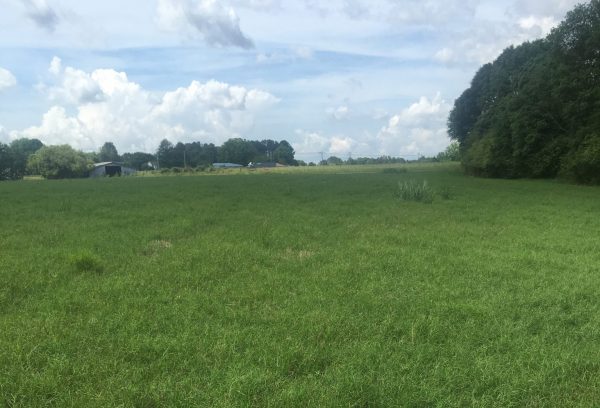 When choosing a site, be sure that it has well-drained soil. Conduct a soil test, and apply recommended amounts of lime, nitrogen (N), phosphorous (P), and potassium (K). Tilling will incorporate the nutrients into the soil. Prepare the seedbed a few weeks before to allow the soil to settle or cultipack with a heavy roller before planting or sprigging. During this period, control emerged weeds with a nonselective burndown herbicide such as glyphosate (e.g., Roundup) or paraquat (e.g., Gramoxone). If sprigging, diuron (e.g., Direx 4L) at a rate of 1.6 to 4.8 pints per acre may be applied after planting and before weed emergence to control annual weeds as long as sprigs are planted at least 2 inches deep.
When choosing a site, be sure that it has well-drained soil. Conduct a soil test, and apply recommended amounts of lime, nitrogen (N), phosphorous (P), and potassium (K). Tilling will incorporate the nutrients into the soil. Prepare the seedbed a few weeks before to allow the soil to settle or cultipack with a heavy roller before planting or sprigging. During this period, control emerged weeds with a nonselective burndown herbicide such as glyphosate (e.g., Roundup) or paraquat (e.g., Gramoxone). If sprigging, diuron (e.g., Direx 4L) at a rate of 1.6 to 4.8 pints per acre may be applied after planting and before weed emergence to control annual weeds as long as sprigs are planted at least 2 inches deep.
Different propagation materials and the best planting times depend on the hybrid bermudagrass being planted. The dates below are for average weather conditions. Contact your regional Extension agent for recommendations specific to your location and current weather conditions.
- Dormant Sprigs (rhizomes): 40 to 50 bu/acre
- North Alabama
- Late February to mid-April
- South Alabama
- Late December to early March
- North Alabama
- Sprigs: 30 to 50 bu/acre
- North Alabama
- Spring (after last freeze)
- South Alabama
- Spring (after last freeze) and early August
- North Alabama
- Clippings/Tops: 50 to 60 bu/acre
- June and August
- This will require stolons (runners) with very mature internodes
- Seeded: 5 to 8 lb (hulled) seed/acre
- Late Spring to early July
Fertilization
Fertilization is vital to maintaining a healthy, productive stand of bermudagrass. Bermudagrass is extremely responsive to nitrogen; however, soil acidity increases with frequent, high rates of nitrogen application. Bermudagrass grows well at a soil pH range of 5.5 to 6.5. Yearly soil tests are recommended to determine pH along with other nutrient requirements.
Nitrogen (N) increases plant growth and crude protein content of forages. Frequency of application and quantity of N is determined by whether the stand is for grazing or hay production. Splitting applications of N increases use efficiency and decreases leaching.
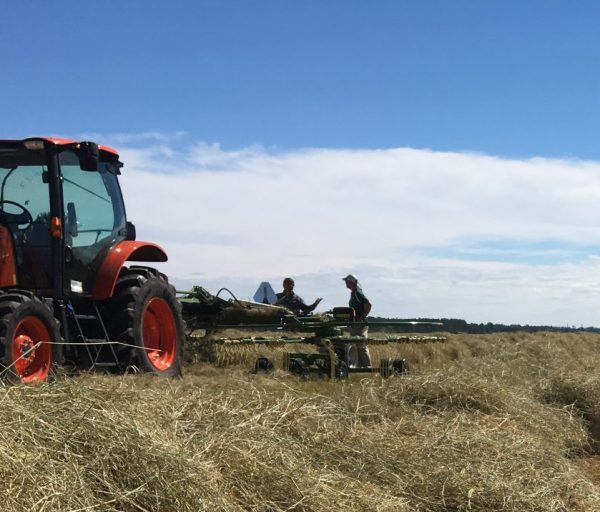 Hay Production: Apply 50 pounds N/acre per cut with the first application at greenup in the spring. Since haying does not allow for nutrient recycling, it is important to replace all nutrients lost in forage production.
Hay Production: Apply 50 pounds N/acre per cut with the first application at greenup in the spring. Since haying does not allow for nutrient recycling, it is important to replace all nutrients lost in forage production.
Grazing: Stocking rate determines the amount and frequency of nitrogen application. For moderate stocking rates, apply 50 lb/acre in April, June, and July. For heavy stocking rates, apply 60 to 80 lb/acre every 4 to 6 weeks.
Phosphorus (P) is needed for many plant processes. A soil test will determine the amount of P needed. Since P does not leach, only one application is needed. Phosphorus can accumulate in Alabama soils, especially when poultry litter is used continuously for fertility.
Potassium (K) is essential for healthy stands and high yields. Low levels of K can cause decreased productivity and thinning of stands. Rates of K needed vary with soil, management intensity, and rate of nitrogen. A soil test will determine the amount of K needed. Splitting K applications will increase efficiency of use. Low K fertility will have a large impact on stand persistence and productivity and will disease susceptibility. Keep K rates up to maintain healthy stands.
Quality Hay Production
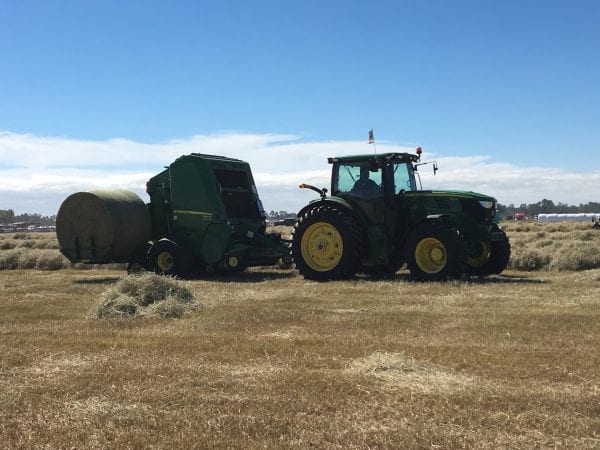 Bermudagrass hay production is a compromise between quantity and quality. Harvest interval is a key component for optimizing nutritive value since quality (digestibility and crude protein) is highest when the grass is young and declines as it matures. Cut hay every 4 to 5 weeks to maintain quality. Good fertility is required for a high- quality productive stand. See the previous section on fertility for recommendations. Another major component for hay quality is storage. Hay left outside will begin to weather and deplete nutrients. Small rectangular bales should always be stored under cover due to high losses; whereas, large round bales sustain less weathering damage but will still benefit from storage under cover.
Bermudagrass hay production is a compromise between quantity and quality. Harvest interval is a key component for optimizing nutritive value since quality (digestibility and crude protein) is highest when the grass is young and declines as it matures. Cut hay every 4 to 5 weeks to maintain quality. Good fertility is required for a high- quality productive stand. See the previous section on fertility for recommendations. Another major component for hay quality is storage. Hay left outside will begin to weather and deplete nutrients. Small rectangular bales should always be stored under cover due to high losses; whereas, large round bales sustain less weathering damage but will still benefit from storage under cover.
Close clipping will not harm stands; therefore, bermudagrass can be cut as low as the terrain and mower will allow (approximately 2 inches). In order to obtain a clean cut, be sure that the mower is in excellent mechanical working condition. Crimping or crushing of stems is not necessary for bermudagrass hay production. A hay tedder used to fluff the swath or windrow after 4 to 6 hours of drying time will increase the rate of drying. In good hay-drying conditions, hay can be ready for baling (less than 20 percent moisture) in 24 to 36 hours.
Grazing Management
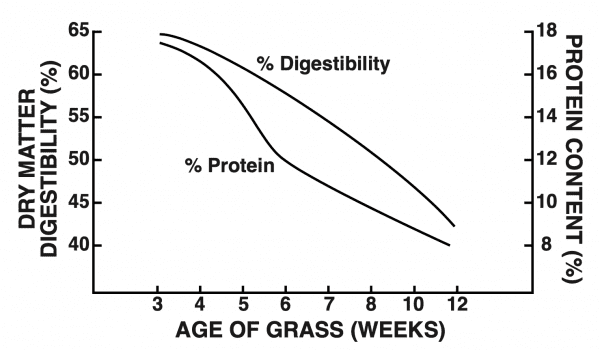
Figure 1. Quality of Coastal bermudagrass as influenced by age of accumulated growth since previous harvest.
Good grazing management will improve animal performance and longevity of the stand. Most bermudagrass pastures are tolerant of continuous grazing; however, rotational or strip grazing is recommended to optimize utilization. Rotating or moving animals when bermudagrass is at 2 to 4 inches of growth allows pastures to rest and regrow. This lets cattle consume young, leafy forage, gain faster, and produce more milk than cattle grazing older, stemmy grass that is lower in digestibility and protein content. Animal weight gain on poor-quality forages will be limited by forge quality (digestibility and protein) and reduced animal intake.
Another key to proper grazing management is adjusting the stocking rate to maintain forage growth by adding and removing animals essential to quality production.. Matching the stocking rate to the growth rate is essential. Since bermudagrass growth is affected by moisture, fertilization, and environmental conditions, the growth rate is not constant throughout the grazing season. When pastures are understocked, overly mature bermudagrass growth will accumulate. Cattle will begin to spot graze by continually grazing small areas in the pasture where the grass is shorter and of higher quality while avoiding the more mature bermudagrass. When this occurs, the pasture is not being used efficiently. Tifton 85 must be managed differently than other bermudagrass varieties. Tifton 85 is the most productive when at least 4 inches of growth is maintained in the pasture.
Weed Control
A healthy stand of bermudagrass is the first step in an integrated weed management approach that will help prevent weed infestations. Maintaining proper soil pH, soil fertility, grazing, and hay management creates a dense cover that is more resilient to weed encroachment. However, even when following all recommended practices, a weed problem can arise. Table 3 provides a short selective list of herbicides that could be used to control different weed species in bermudagrass fields. For up-to-date and thorough information, see Alabama Extension’s “Pastures and Forages Crop IPM Guide” (IPM-0028).
Table 3. Herbicides for Weed Control
* With use of any herbicide product, always read and follow label directions and appropriate harvest and/or grazing restrictions.
| Weed | Herbicide* |
|---|---|
| Broadleaf | 2,4-D, Banvel (dicamba), Remedy Ultra (triclopyr); Weedmaster (dicamba + 2,4-D); PastureGard (triclopyr + fluroxypyr); GrazonNext (aminopyralid + 2,4-D); Grazon P+D (picloram + 2,4-D) |
| Annual/perennial sedges, johnsongrass | Outrider/Maverick (sulfosulfuron), Permit (halosulfuron) |
| Bahiagrass | Pastora (nicosulfuron + metsulfuron), Cimarron Plus (metsulfuron + chlorsulfuron) |
| Smutgrass | Velpar (hexazinone) |
| Other grasses | Facet (quinclorac), Spot treatment with Roundup (glyphosate); however, the hybrid bermudagrass will be injured or killed in the treated area. |
| Winter annual grasses in dormant bermudagrass | Gramoxone Extra (Paraquat), Roundup (glyphosate)–be sure that bermudagrass is truly dormant, Prowl H2O (pendimethalin)–preemergence for annual grasses and small-seeded broadleaf control |
Insect Pests
A variety of insect pests can infest bermudagrass and cause reductions in yield and/or quality. The timing, severity, and frequency of these pests often varies with environmental conditions. Therefore, a solid integrated pest management program is proactive and involves regular monitoring for insects, proper identification, and always takes into account weather events. The key to proper management is detecting infestations early to maximize control options. Finally, a healthy bermudagrass stand (e.g., fertilization and regional varietal selection) has the best chance of recovering from an insect infestation.
Fall armyworms are extremely destructive as they feed on leaves and can completely strip a field if not detected in time. The best way to detect an infestation is to sweep fields weekly during summer and fall. When an infestation is detected, the field needs to be harvested or grazed. If grass cannot be harvested, use insecticides when worms are small.
If you find 2 to 3 caterpillars per square foot, it may warrant an insecticide application. Pyrethroids are labeled for fall armyworm control in pastures, but there are some things to consider when choosing a chemical such as the residual effect, the cost, and the preharvest interval. If all of the armyworms in the field are approximately the same size, a cheap pyrethroid with a short residual will work (i.e., Mustang Maxx, Tombstone). However, armyworms of different sizes indicate multiple generations and a product with a longer residual would work better (i.e., Prevathan, Dimilin, Intrepid).
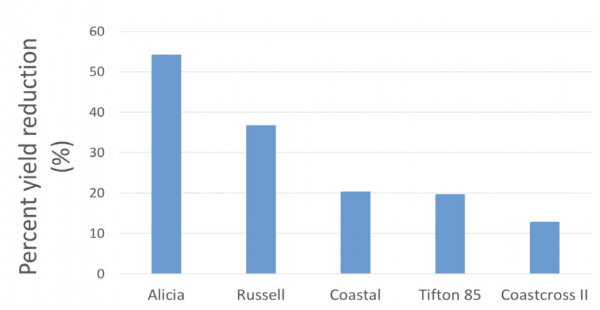
Figure 2. Bermudagrass stem maggot yield reduction. Adapted from Baxter, 2017.
Bermudagrass stem maggot causes death to the top leaves causing a brown, dried look across the field. The adult fly has a small, yellow body with a life cycle around 12 to 21 days. The adult fly lays eggs on the bermudagrass and the larval stage feeds on the plant. Early detection is key and careful scouting for the presence of the fly or maggot is necessary. Once damage has occurred, grass will not recover, and delayed action can cause harm to future growth. If damage occurs when bermudagrass is 6 to 8 inches tall (approximately 3 weeks of regrowth), clip or graze and apply chemical suppression. Label rate of pyrethroid (Baythroid, Karate, Mustang Max) should be applied 7 to 10 days after cutting and 7 to 10 days after first application. Several applications may be necessary to disrupt the breeding cycle. All varieties of bermudagrass are susceptible to the maggot; however, some varieties are more prone to damage (figure 2).
Spittlebug is a dark brown or black flying insect with two orange-red lines down the wings. This insect damages the leaves causing them to turn brown and look frosted. When scouting the field, the young insects can be found in a white froth or spittlelike material on the plant. Keeping grass mowed or grazed will prevent most problems. Using a controlled burn on bermudagrass before greenup will kill the eggs and immature insects. Chemical control is not recommended for spittlebugs in bermudagrass. If there was a heavy infestation of spittlebugs in the previous year, the area may be burned in late winter or early spring (January–March).
Diseases
Diseases are not usually a problem, but two fungus diseases occur periodically.
Helminthosporium, also known as Bipolaris is the most common disease found in bermudagrass. It attacks roots, crowns, stems, and leaves causing long reddish- brown to purplish-black spots. This eventually kills the leaves causing frosted or tan circular areas in the field. Low K levels and spittlebug injury increase susceptibility. To control this disease, keep K levels up, burn fields before green up, control spittlebugs, and harvest grass on a regular schedule.
Rhizoctonia is a disease caused by soil fungus that infects stems and leaves in hot, wet weather. It causes brown circular patches. To control this disease, avoid excessive rates of nitrogen and promptly remove hay from the field after baling.
 Leanne Dillard, Extension Specialist, Assistant Professor; Megan Griffin, TES Technician; Kim Mullenix, Extension Specialist, Associate Professor; David Russell, Assistant Extension Professor; and Katelyn Kesheimer, Extension Specialist, Assistant Professor, all with Animal Science and Forages at Auburn University.
Leanne Dillard, Extension Specialist, Assistant Professor; Megan Griffin, TES Technician; Kim Mullenix, Extension Specialist, Associate Professor; David Russell, Assistant Extension Professor; and Katelyn Kesheimer, Extension Specialist, Assistant Professor, all with Animal Science and Forages at Auburn University.
Revised June 2020, Bermudagrass in Alabama, ANR-2631

